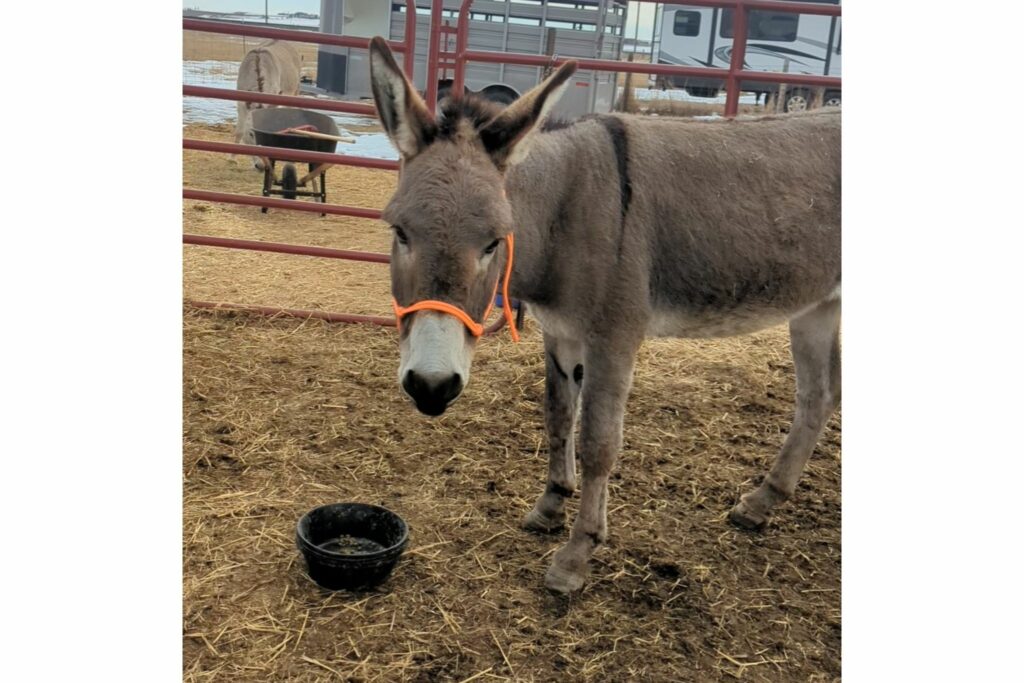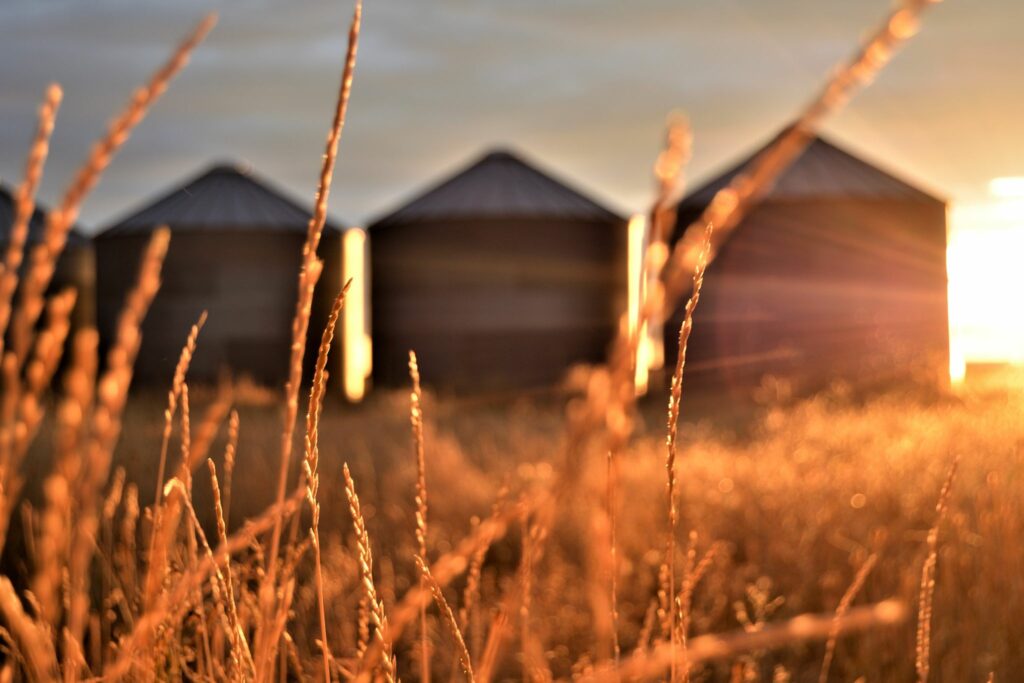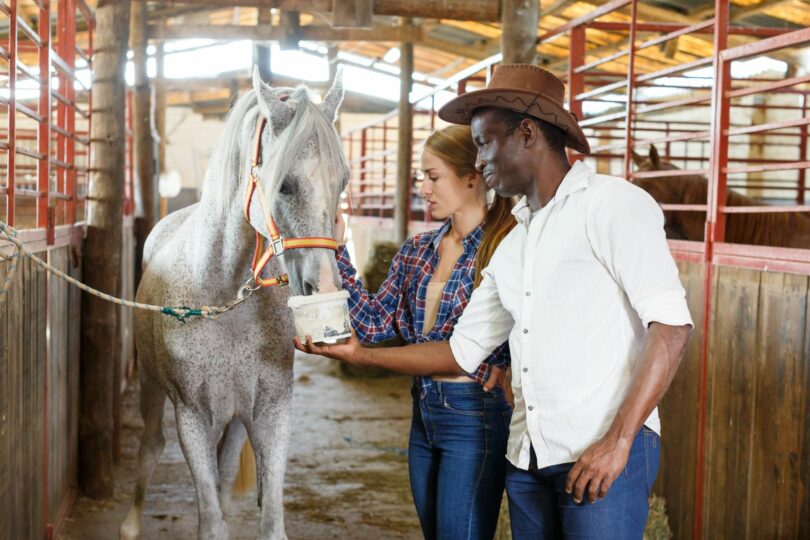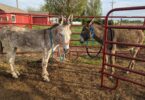Four Best Low Starch Solutions
With specialized diets gaining popularity, you’ve perhaps considered switching your horse to a low-starch feed. Or maybe your vet diagnosed your horse with a condition like EMS, PPID, or laminitis, and low-starch feed is a must. Let’s talk about what low starch means and what horses may benefit from it.
Low-starch feed has 20% or less combined sugar and starch content. Horses with health conditions like laminitis, PSSM, Cushing’s, or insulin resistance may need a low-starch feed to stay healthy.
Other horses who are excitable or overweight may also benefit, as well as donkeys. Many major feed brands, including Nutrena and Purina, offer low-starch options.
What Is Low-Starch Horse Feed?
Low-starch isn’t just about grain, it’s also about sugar. There are two types of carbohydrates: structural and non-structural. Structural carbs are good sources of fiber. They help digestion and provide energy without raising blood glucose levels.
Non-structural carbs, or NSCs, are starches and simple sugars. They’re easily digestible, which means they can raise blood glucose levels. NSCs are an important energy source for performance horses and can help hard keepers maintain their weight.
Low-starch is a measure of NSCs. Generally, a feed is low-starch if the sugar/starch percentage is 20% or less.
Why Feed a Low-Starch Horse Feed?
There are several reasons to choose a low-starch feed. Horses who are excitable, obese, or prone to digestive issues can do very well on low-starch feeds, as can horses with the below health conditions.
Laminitis
Laminitis, or when there’s damage and inflammation between the coffin bone and hoof wall, is a serious condition that demands a low NSC diet.
PSSM
Polysaccharide storage myopathy, or PSSM, happens when a horse can’t use stored glucose for energy. As such, they’re more prone to issues like tying up. A low NSC feed reduces the amount of glucose in the blood.
Tying Up
Tying up is when a horse experiences uncontrollable and painful muscle contractions. High-grain diets can often contribute to the issues, so a low NSC feed can bring relief.
Donkeys
Donkeys need fewer calories and are more prone to obesity. They may not need any grain at all, but if you do opt to feed a little grain, a low NSC feed is the way to go. You can learn more about donkey nutrition here.

Source: Bottomless Backpacks
PPID/Cushing’s
Pituitary pars intermedia dysfunction, or PPID (formerly known as Cushing’s), is an endocrine disease that can benefit from a low-starch diet.
Insulin Resistance
Also called insulin dysregulation, it’s a component of EMS (equine metabolic syndrome). Horses with EMS or insulin resistance need both fewer calories and lower starch.
What is considered low-starch horse feed?
A low-starch feed is anything with 20% or less combined sugar and starch. 10% or less is recommended for at-risk horses.
There are also some “mid-level” options at 20-25%.
How do you figure out if a feed is low-starch?
Any feed that offers 20% or less combined NSCs may be marketed as low-starch. Not all feeds, however, will tell you the specific NSC level; you might have to do some math.
Simply add the starch percentage to the sugar percentage for the total NSC. For example, if a feed label shows 16% starch and 11% sugar, the NSC amount would be 27%.

source: canva
Best Low-Starch Feeds for Horses
Safe Choice Special Care by Nutrena
Safe Choice Special Care is ideal for horses with metabolic issues or those that are easy keepers.
Key Features
Protein and fiber content is high (14% and 17%), providing all the nutrients to keep your horse healthy.
Point of Differentiation
They offer a guaranteed 13% maximum which is ideal for most horses who require low NSC intake.
Learn More Here: https://www.nutrenaworld.com/product/safechoice-special-care-horse-feed
Purina WellSolve Low Starch
Purina put years of research into developing this low-starch feed.
Key Features
WellSolve feed offers an 11% maximum, perfect for high-risk horses or those with existing conditions. The fiber content is also high, at 23%.
Point of Differentiation
This formula includes no molasses and a blend of amino acids to help maintain muscle tone.
Learn More Here: https://shop.purinamills.com/products/purina%C2%AE-wellsolve-l-s%C2%AE-horse-feed
Kalm ‘N EZ Pellet by Tribute
Kalm ‘N EZ by Tribute is a fortified low NSC option for horses who need a low sugar, low-starch diet.
Key Features
At 13.5%, this low NSC feed is suitable for most horses and is also high in fat, which makes it ideal for hard keepers or those in active work.
Point of Differentiation
The high fiber level of this feed (20%) means it can replace forage (if necessary for your horse).
Learn More Here: https://tributeequinenutrition.com/products/kalm-n-ez-pellet
Total Equine LNSC
Total Equine LNSC was formulated specifically for horses with Cushing’s or insulin resistance.
Key Features
This feed offers a great balance of nutrients, with 15% protein, 20% fiber, and 16% sugar/starch.
Point of Differentiation
Their formula boasts no starch from any grain sources (instead using beet pulp and alfalfa), which makes this feed highly digestible.
Learn More Here: https://www.chewy.com/total-feeds-total-equine-lnsc-horse/dp/237985
Frequently Asked Questions
Q: What does low-starch do for horses?
Horses can’t utilize starch effectively if they’re fed too much of it. Low-starch feed can help prevent problems like ulcers, insulin resistance, and laminitis.
Q: What is the lowest sugar horse feed?
The sugar content of a feed is determined by adding the amount of sugar and starch together. If the total is less than 20% (10% for at-risk horses), it’s considered low-sugar.
Q: Is Purina Strategy a low-starch feed?
Based on the 20% or less rule, no. Purina Strategy Professional Formula comes in at 25%. Purina Strategy Healthy Edge, however, comes in at 16.5%. The Purina WellSolve L/S feed is the lowest at 11%.
Q: What horse feed is low in sugar and starch?
Most mainstream horse-feed brands like Purina, Nutrena, and Triple Crown all offer options that are low in sugar and starch.
Q: What feed is best for laminitic horses?
A pelleted forage balancer can be a great option as it gives your horse the illusion of grain while keeping calories, starch, and sugar low.

source: canva
Parting Thoughts
Low-starch feeds can be lifesavers for horses with medical conditions. They’re also great for some horses who suffer from obesity or high excitability.
If your horse doesn’t need a low-starch feed, check with your vet before making the switch, as many horses do actually need higher amounts of NSCs to maintain their weights and workloads.
P.S. Enjoy this article? Trot on over to:
- Three Types of Horse Feed Every Owner Should Understand
- Tips & Tricks: How to Help Senior Horses Gain Weight
- Best Portable Horse Feeder? It’s in the (Nose) Bag.
- Foundering in Horses: Figure Out Your Fix
- Donkey vs. Horse Nutrition: What’s the Difference?
- Draft Horse Diet: How Much do they Really Eat?
- Best Feed for an OTTB: An Art and a Science
- Mares and Foals: How to Feed Breeding Stock for Success
- How to Soak Hay for Horses (and Why Bother)
Further Reading:
Does Your Horse Need a Low-Starch Diet? – The Horse
Sugars and Starches in Horse Feed | Purina Animal Nutrition (purinamills.com)







